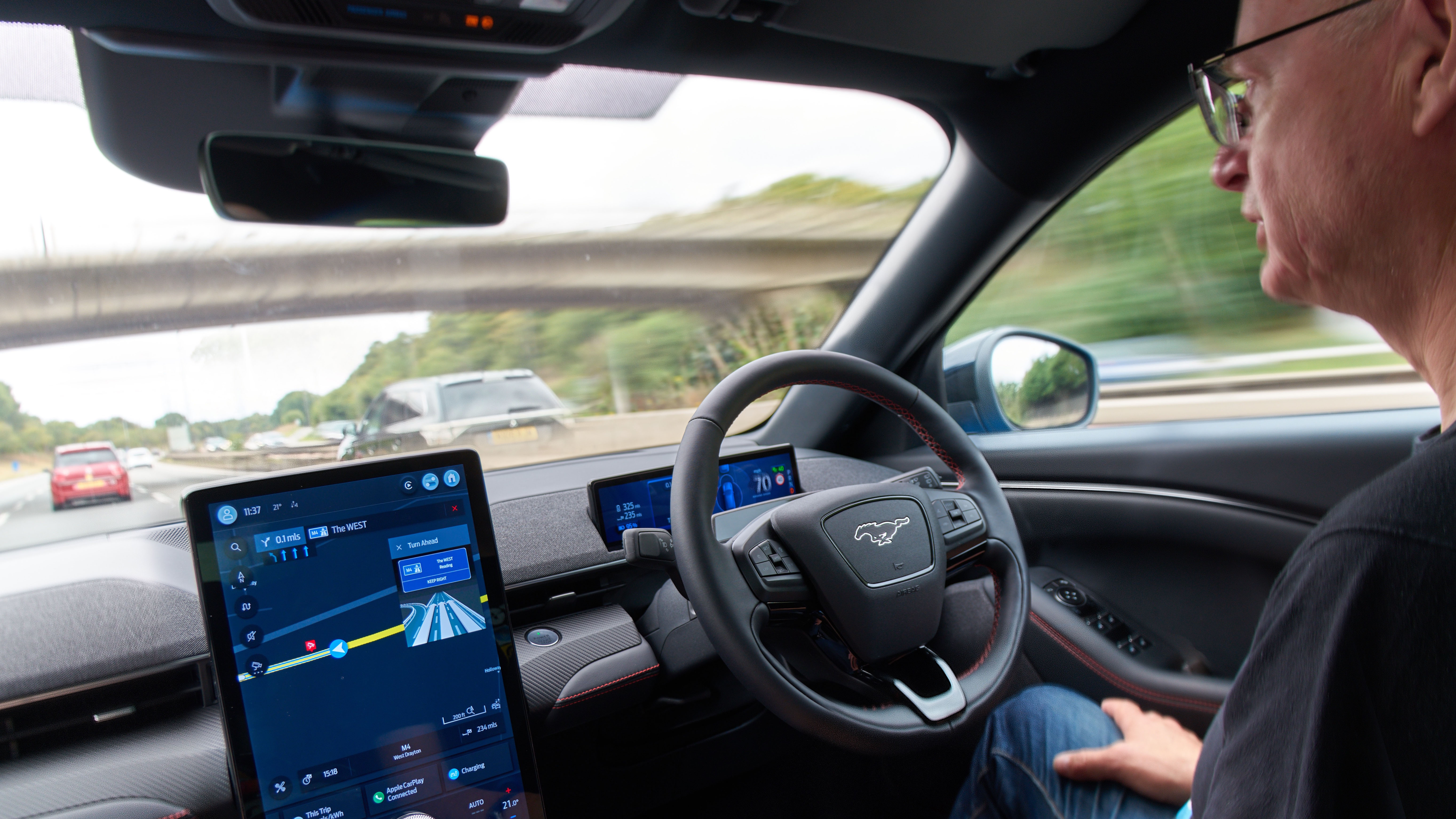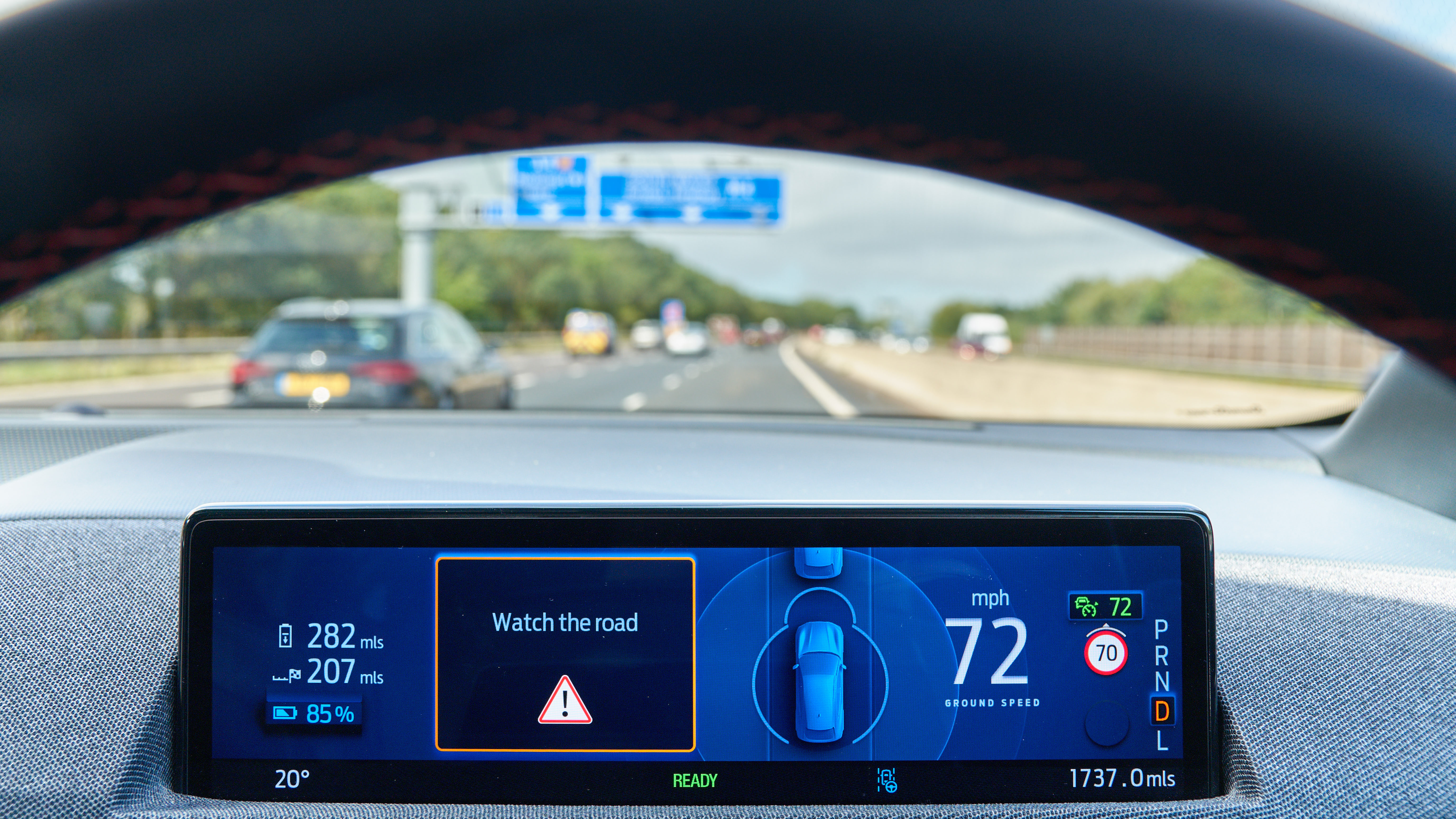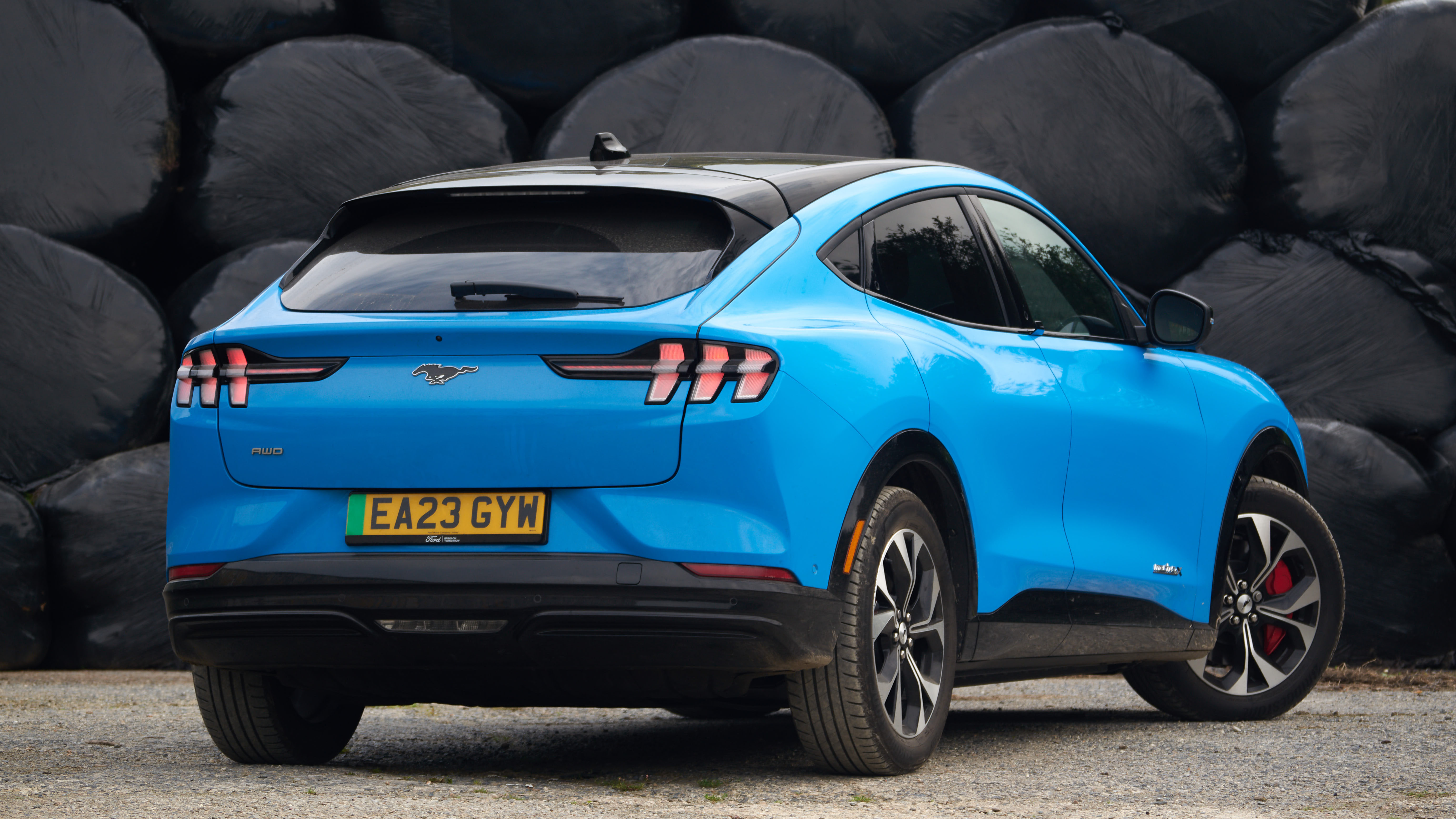
Is this some sort of experimental car?
Nope. It's a legal production car. These photos give the game away, but here's a prize question for when you're next down the pub. Which is the first and only manufacturer to offer hands-free driving in the UK? Win a pint if someone says Tesla. Another for Mercedes-Benz. BMW? Nope. None of these. You're starting to get a little woozy now.
A bonus packet of dry-roasted to whoever gets the correct answer: it's Ford.
What's the cost?
The hardware comes on all new Mustangs, and the system, called BlueCruise, is activated by subscription. In the modern way. Buyers get a free trial sub for three months, and after that it's £17.99 a month. I guess if you enjoy using it and drive on motorways often, 60p a day is tolerable.
How and where can you use it?
I dived deep into the menus and there's no touchscreen button. I sheepishly rang Ford and was told that's how it is. You just drive, turn on the active cruise control with lane assist, and if it's a BlueCruise road, the driver's screen goes blue and says 'hands free'.
BlueCruise roads, AKA Blue Zones, are basically the motorway network. Ford's website has a map. Elsewhere it's like any other adaptive cruise control with lane centring assist.
That seems pretty weird. Do you get used to it?
Maybe if you're a 19-year-old driver from Silicon Valley or Shanghai, taking your hands off the wheel might not seem such a conceptual novelty, but for the rest of us it takes serious getting used to. So I went on a long drive out of London, trying to keep my mind open.
On the M4, I got the nod from the blue screen somewhere between Heathrow and the M25 junction. I set the speed, tucked my feet under my knees, put my hands tentatively in my lap and nervously awaited developments.
What happened?
In normal smooth motorway traffic, or indeed glutinous congestion, it was smooth and stable. It also read limit signs and slowed down for temporary limits. That was a bit keen actually; it also used sat nav limit data and had an outdated 60mph section in its memory and kept falsely slowing me there.
Did you get confident then?
Shortly after I first switched it on, a Mini pulled out in front of me, going probably 20mph slower. At this point the spirit of fearless journalistic inquiry entirely abandoned me, and I grabbed the wheel and hit the brakes. Sorry, but you would have too. And I suspect that even if I'd been using this thing for thousands of miles, I still would have braked.
Sure, the system would have in all probability worked fine and slowed me down to avoid planting in the Mini's chuff. But the system hadn't coped, the M4/M25 junction right by Heathrow on a bank holiday weekend would have made me a viral sensation for all the wrong reasons.
Top Gear
Newsletter
Thank you for subscribing to our newsletter. Look out for your regular round-up of news, reviews and offers in your inbox.
Get all the latest news, reviews and exclusives, direct to your inbox.
Thing is, I saw the Mini begin to move. It had indicated and even if it hadn't, its body language was screaming 'lane change ahoy'. But there was no sign of the Mustang reacting until it had transgressed significantly into my lane. That's standard procedure for all radar cruise systems of course. They're not good at reading other traffic, so sometimes they over-react to things that are no danger, sometimes they under-react to situations a human can clearly see developing.
So you have to keep alert?
I never felt I could let my attention wander. Besides, BlueCruise wouldn't let me. There are eyeball sensors on the steering column and when you look away it gives you stern warnings, and eventually turns itself off. When I was taking these driver's-eye photos, if I looked down for an instant to check focus, it started nagging me.
In other words it's feet-off, hands-off, eyes-on. Even if it felt a bit prim to be sitting with my hands in my lap, that's what I did whenever it was switched on, just to kill any ambiguity. That way I knew the car was doing its stuff. And more importantly, when my hands were on the wheel it reminded me to drive in the usual way. With any driver assist system, there's a danger you think it's activated when it isn't.
If you can't read a book or enjoy the scenery or doze off, how is this helping?
Well, I did manage to eat my lunch with more dignity than the usual one-handed motorway-pasty-crumb-atomisation process.
The engineers say it makes you more relaxed. Unburdens you from parts of the task. Really? Even after hundreds of miles it felt like when you're on a journey sharing the driving with someone you're not sure you can trust: when being in the passenger seat is more nerve-wracking than actually driving yourself.
Look, maybe by the end of the three-month trial I'd relax more. Maybe if I had a regular long trip in good weather (the artificial eyes need clear visibility) it would be a help. But I'm unconvinced.
So where are we?
It's an interesting and technically impressive step on the road to autonomous driving. And like all such steps, it's a necessary one, because it lets the engineers gather data and the accountants collect the subscriptions that fund the brutally expensive development of the next steps.
But until we get to the destination – a car that will truly let people take their attention off the road for the biggest and most boring slabs of a journey – we're not really any further forward at all. Your hands and feet might be freed up, but there's not much you can do with them. The parts of you that you'd like to be free, your eyes and brain, are still shackled.
And you certainly couldn't let BlueCruise drive you home from that pub bet.
Featured

Trending this week
- Car Review
BMW iX3






